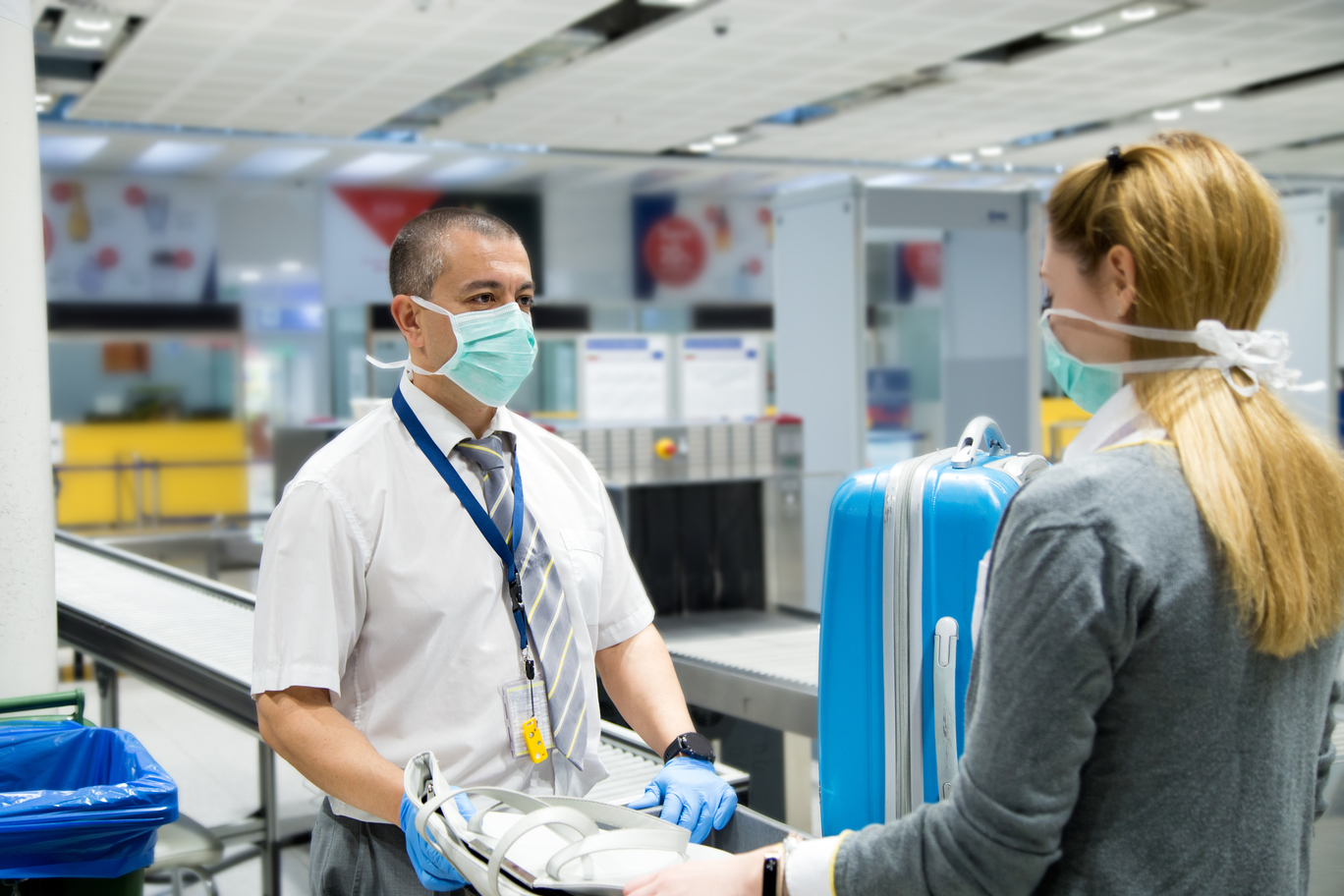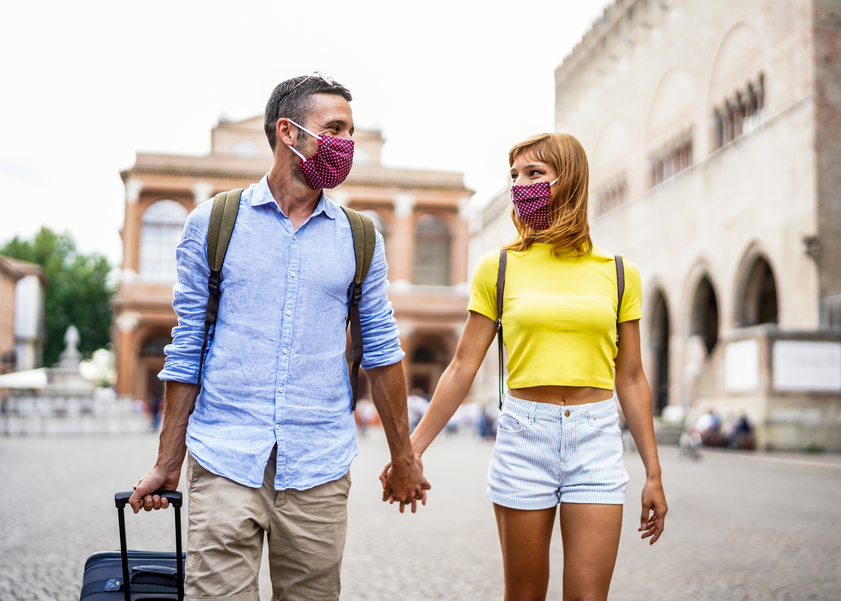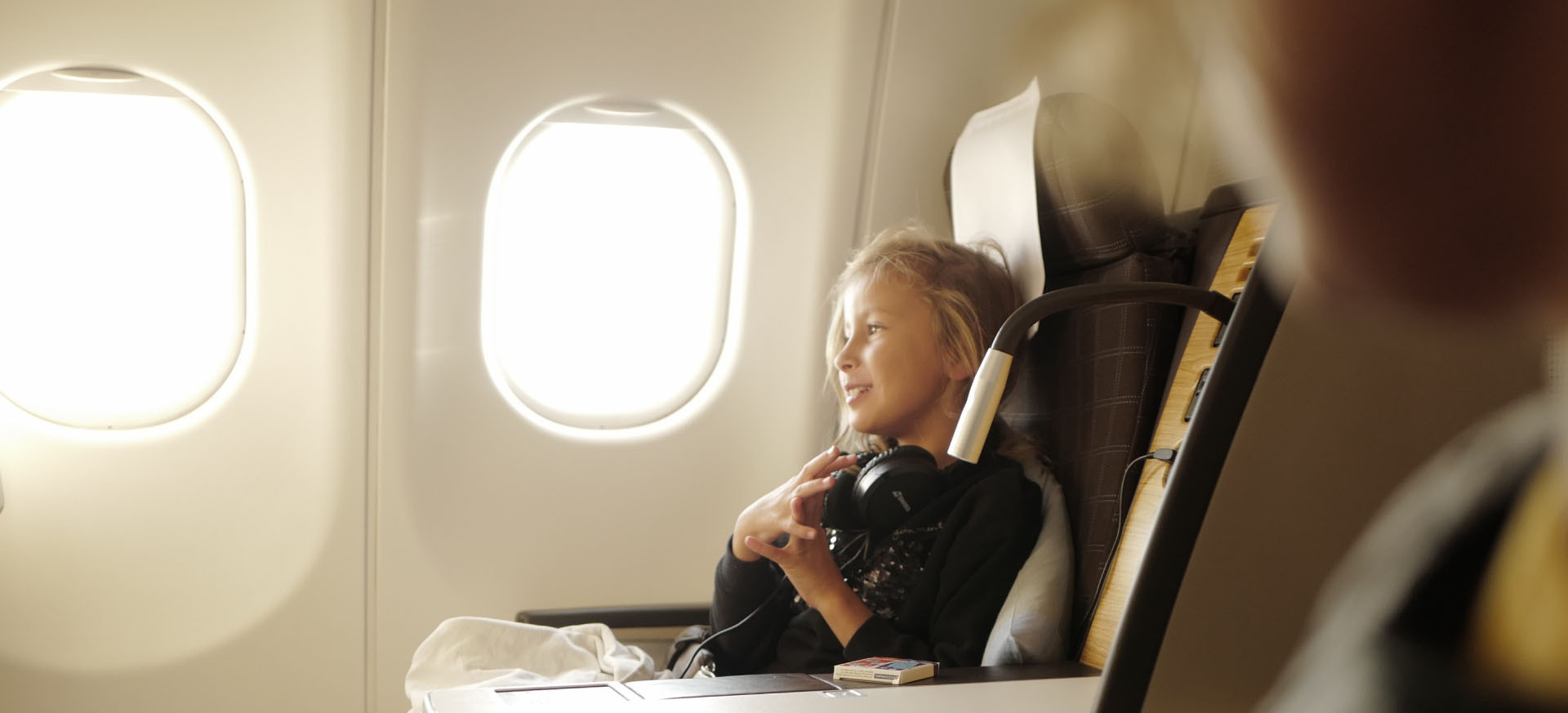Traveling during a pandemic comes with new challenges. While mistakes and missteps are bound to happen, knowing what to expect can help ensure that your trip goes as smoothly as possible. This includes anticipating potential obstacles and snafus that can derail your plans. To that end, we’ve compiled this handy roundup of 10 common COVID-19 (Coronavirus) travel mistakes to help you better prepare for takeoff.
1. Traveling without a mask
While mask requirements vary, the Centers for Disease Control (CDC) is firm in recommending that people wear face coverings in public settings to help prevent the spread of the Coronavirus. Additionally, many businesses – including airlines – are now requiring people to wear masks. The best way to protect yourself while ensuring no disruption to your trip? Wear a face mask. Having one on hand can also prevent you from the frantic scramble of trying to track one down if it becomes a requirement along the way.
2. Traveling without hand sanitizer and disinfectant
Airlines, hotels, retail stores, and other businesses are working hard to protect the safety of their customers. Despite enhancing cleaning and sanitizing protocols, you can still do your part to minimize germs in your environment by bringing along your own hand sanitizer and disinfectant. Remember: These things may not be available at your destination. Packing your own ensures that you’ll have them if you need them.
3. Not familiarizing yourself with new rules and requirements
 As the COVID-19 pandemic is fluid, so are international, national, and local rules, regulations, and responses. One example? TSA has upped the carry-on liquid limit to 12 ounces exclusively for hand sanitizer. Keeping up with these changes can help you avoid inconvenient delays and disruptions.
As the COVID-19 pandemic is fluid, so are international, national, and local rules, regulations, and responses. One example? TSA has upped the carry-on liquid limit to 12 ounces exclusively for hand sanitizer. Keeping up with these changes can help you avoid inconvenient delays and disruptions.
4. Traveling without your own pillow and blanket
Frequent fliers who rely on airline pillows and blankets may have an unpleasant surprise awaiting them upon takeoff: Many airlines are no longer providing these items. Bringing along your own not only means you’ll be comfortable, but you’ll also be reducing your exposure to germs. Using your own bedding in a hotel, Airbnb, or other lodging is also a smart choice.
5. Not filling prescriptions in advance
In everyday life, filling a prescription is not a big deal. In Coronavirus times, however, there are extra considerations. From limited staffing at doctor’s offices to reduced hours at pharmacies, it may be harder to fill a prescription while you’re traveling. Plus, why go into a store when you don’t have to? By making sure you’re traveling with enough medication for your whole trip, you avoid the hassle and headache of trying to do it on the fly.
6. Not packing extra food and water
Food and drink service on airlines may be reduced or stopped entirely on your flights. Meanwhile, venturing into a food court or stopping to buy food on the road can make you more vulnerable to exposure. A simple solution? Pack extra snacks and drinks.
Also, while a true emergency is unlikely, it’s possible. If the virus surges and destinations are forced to shut down, you’ll be grateful to have these rations.
7. Failure to pack properly
With social distancing measures in place that are aimed at creating space between people and germs, minimizing contact is important. Unfortunately, a poor packing job can have the opposite effect. For example, TSA is now asking passengers to pack all carry-on food items in clear plastic bags which will be placed in a bin for the screening process. As food often triggers the alarm, this reduces the need that a TSA agent will have to handle your bag and belongings. Following this and other security-related rules for everything from liquids to laptops can reduce the risk of contact and cross-contamination.
8. Not allowing enough time for check-in and security
COVID-19 has impacted staffing and operations everywhere. Airports are not exempt. If you’re used to arriving at airport security checkpoints shortly before your flight departure time, you may encounter unexpected delays. To be safe, allow plenty of extra time. That being said, arriving too early for your flight can also lead to social distancing challenges as with more people flying, airports are more crowded.
9. Failure to look into airline- and airport-specific guidelines

While airlines and airports share some common protocols, they’re not one-size-fits-all. Before traveling, make sure to specifically look into guidelines for your arrival and departure destinations, as well as for the airline you’re flying.
Additionally, cities are also conducting themselves very differently during these uncertain times. While some are open for business, others are still locked down. Understanding the state of where you’re headed can help you know what to expect and prepare accordingly.
10. Lack of adaptability
While this is a relatively broad “mistake,” it’s a critical one. Many of us are eager for the world to return to normal. Unfortunately, the best we can expect at this point in time is a “new normal” – and one that is constantly evolving. The more flexible and adaptable we commit to being while traveling post-COVID-19, the less stressful the experience will be.




